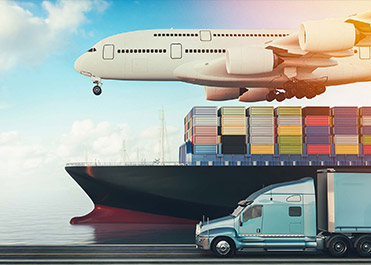The Future of Global Freight and Export Logistics
The landscape of global freight and export logistics is evolving rapidly, driven by technological advancements, changing consumer demands, and global economic shifts. As businesses seek faster, more cost-effective, and sustainable transportation solutions, innovative strategies and emerging trends are reshaping the industry. This article explores the future of global freight and export logistics, focusing on key developments that will define the sector in the coming years.
Emerging Trends in Freight and Export Logistics
1. Automation and Robotics
The use of automation and robotics in logistics is increasing, from automated warehouses to self-driving trucks and drones. These technologies enhance efficiency, reduce labor costs, and minimize errors in supply chain operations.
2. AI-Powered Predictive Analytics
Artificial Intelligence (AI) is revolutionizing logistics by enabling predictive analytics, route optimization, and demand forecasting. AI-driven insights help companies make data-backed decisions, reduce delays, and optimize shipping costs.
3. Sustainable and Green Logistics
Environmental concerns are pushing companies to adopt sustainable logistics practices. The use of electric and hydrogen-powered vehicles, carbon-neutral shipping solutions, and eco-friendly packaging is becoming more common in the industry.
4. Hyperloop and High-Speed Freight Transport
New transportation technologies like the Hyperloop and high-speed rail freight systems are expected to reduce transit times and improve cargo efficiency. These innovations could redefine international trade logistics in the near future.
Challenges Facing the Future of Logistics
1. Infrastructure Limitations
While new technologies offer exciting possibilities, many regions still face infrastructure challenges, including outdated ports, congested roads, and inadequate rail networks.
2. Cybersecurity Risks
With the increasing reliance on digital solutions, cybersecurity threats in logistics are becoming a major concern. Companies must invest in secure systems to protect sensitive supply chain data from cyberattacks.
3. Regulatory Uncertainties
Trade policies, tariffs, and compliance regulations are constantly changing, creating uncertainties for businesses engaged in global exports. Companies must stay informed and adaptable to regulatory shifts.
Opportunities in the Evolving Logistics Landscape
1. Expansion of E-Commerce Logistics
The surge in e-commerce is creating new opportunities for logistics providers to expand last-mile delivery networks and develop innovative shipping solutions tailored for online retailers.
2. Digital Freight Marketplaces
Digital freight platforms are revolutionizing the industry by connecting shippers with carriers in real time, improving efficiency and reducing empty miles for transport vehicles.
3. Investments in Smart Ports and Smart Warehouses
The adoption of IoT-enabled smart ports and warehouses is enhancing cargo handling efficiency, reducing turnaround times, and optimizing supply chain operations.
Conclusion
The future of global freight and export logistics is shaped by innovation, sustainability, and digital transformation. While challenges such as cybersecurity risks and regulatory uncertainties remain, businesses that embrace emerging trends and invest in advanced logistics solutions will gain a competitive advantage in the evolving marketplace. As technology continues to progress, the logistics industry will play a pivotal role in shaping the future of global trade.







Leave a Reply
Want to join the discussion?Feel free to contribute!